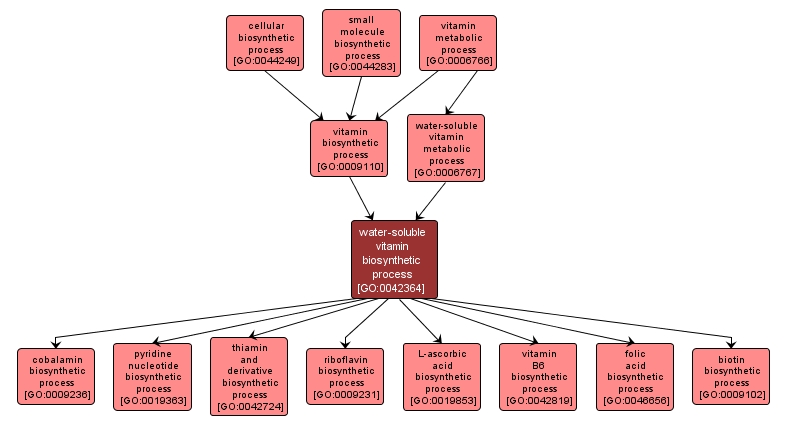GO TERM SUMMARY
|
| Name: |
water-soluble vitamin biosynthetic process |
| Acc: |
GO:0042364 |
| Aspect: |
Biological Process |
| Desc: |
The chemical reactions and pathways resulting in the formation of any of a diverse group of vitamins that are soluble in water. |
Synonyms:
- water-soluble vitamin synthesis
- water-soluble vitamin anabolism
- water-soluble vitamin biosynthesis
- water-soluble vitamin formation
|
|

|
INTERACTIVE GO GRAPH
|














